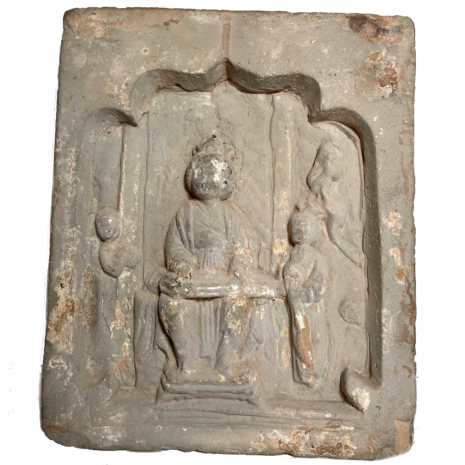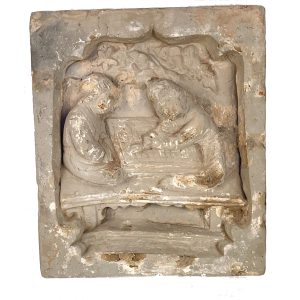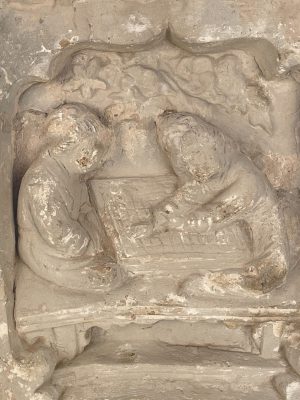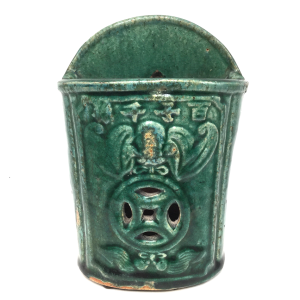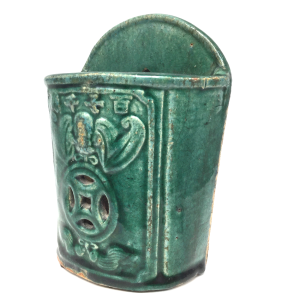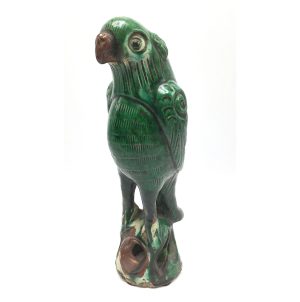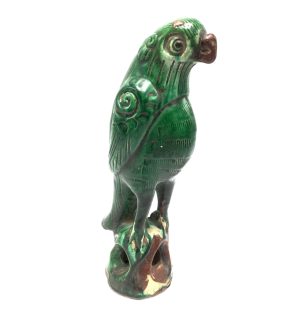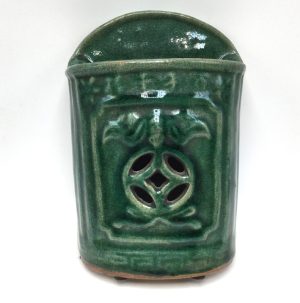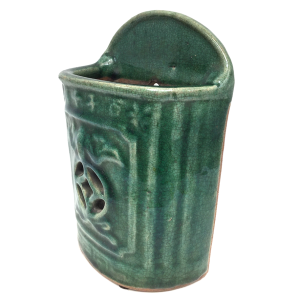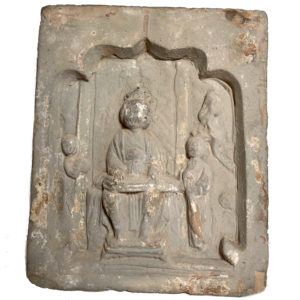Song Dynasty Tile of Musician with Lute, China (3998BOK) $475
$475.00
H: 9” W: 9” D: 2.25” | FREE SHIPPING
This thick decorative Song brick tile portrays a seated female musician holding a lute in a hall with attendants on each side and third person in the distance framed in a decorative wide border with a pointed ogee arch. Since most ancient buildings with these pieces used un-reinforced fired construction, they were subject to disasters and few survived intact.
Description
The Song dynasty (960–1279) is considered the most culturally brilliant era in later imperial Chinese history. A massive expansion during this dynasty produced government, public and religious buildings and tombs with walls decorated with earthenware unglazed mold-made brick tiles. Some were purely decorative and others were wishes for happiness and comfort in the deceased’s afterlife called mingqi. Brick tiles depicted holiday celebrations and mythology, as well as mythical animals, plants, vegetation and other auspicious objects. This brick portrays a seated female musician holding a lute on her lap in a hall with attendants on each side and third person in the distance. This scene’s top is framed by a decorative curved wide border with a pointed ogee arch (an Indian artistic tradition) framing a musician with an attendant on each side. Ancient China was home to numerous musical instruments including a variety of wood lutes with sound boxes of varying sizes and shapes and differing numbers of strings. Long favored by scholars and literati as producing subtle melodic music, they were referred to as “Chinese lute” or “ancient lute.” Playing a lute is one of the Four Scholarly Pursuits (siyi) played since the Warring States Period where lutes were found in ancient tombs attesting to their importance. By the Tang Dynasty they were the most widespread and popular Chinese musical instrument along with flutes, drums and cymbals and were performed in different regional styles and techniques. As most ancient buildings containing these pieces used traditional un-reinforced fired mud/brick construction, they were subject to disasters like earthquakes, floods, fires, and war so that few survived intact and often require repair and restoration. This tile piece is in fair/good condition with some restoration of the background, earth adherents, expected chips, cracks and paint losses and with some white slip and paint remaining. With an appropriate mount it would make a great wall art decoration.
Sources
The Helen E. Fernald, “Ancient Chinese Musical Instruments as Depicted on Some of the Early Monuments in the Museum, Museum Journal, University of Pennsylvania Museum Journal, Volume XVII, No 4, originally published 1929
Ingrid Furniss, “Unearthing China’s Informal Musicians: An Archaeological and Textural Study of the Shang to Tang Periods,” Yearbook for Traditional Music, Vol. 41 (2009), pp. 23-41, Cambridge University Press. in jstor
Additional information
| Weight | 15 lbs |
|---|---|
| Dimensions | 18 × 12 × 16 in |
| Place of Origin | China |
| Period | Ancient, Song Dynasty |
| Date | 960-1127 |
| Materials and Technique | Earthenware |
| Dimensions (inches) | : Ht: 9” W: 9” D: 2.25” |
| Dimensions (metric) | Ht: 17.78cm W: 12.7cm D: 7.62cm |
| Weight | 7lbs 5oz |
| Condition | Good to fair, see description |
| Item Number | 3998BOK |
| Shipping Box Size |

